The 32nd World Irish dance championships were held inGlasgow and drew dancers from around the world. David Kirkwood reports. Photography by Paul McSherry.
℘℘℘
Scotland, for ten days in spring, became the world Mecca for Irish dancing when dancers from across the globe descended on Glasgow.
The 32nd World Irish Dancing Championships, Oireachtas Rince na Cruinne 2002, was held in the Clyde Auditorium — or `The Armadillo’ as it is known by the Glaswegians because of its exterior design.
It was the first time in its history that the contest had been held outside of Ireland, and young competitors from across the States and nine other countries danced their hearts out in an attempt to impress adjudicators with their skills during ten days of intense competition.
Dancers traveled with family, friends and coaches from countries as diverse as the U.S., Australia, Canada, New Zealand, Switzerland and South Africa to the Scottish Exhibition and Conference Centre in which the Armadillo is located. American pupils of Irish dancing schools, from New York to California, aged eight to over 21, accounted for around a quarter of the 4,300 competitors dancing for the title of World Champion.
The total competitors included 1,800 solo dancers in different age groups and another 2,500 members of the 200 teams competing in ceili and drama dancing.
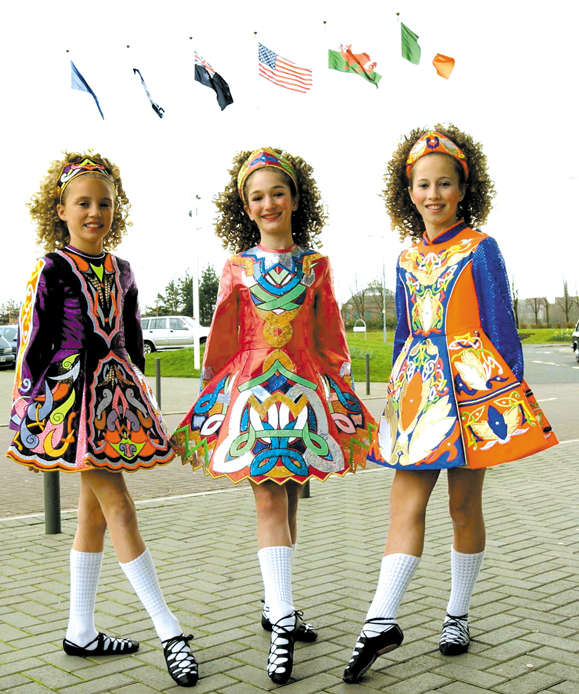
Irish dancing has grown in popularity in recent years with the phenomenal global success of international shows such as Riverdance and Lord of the Dance, which have taken Irish dancing to a worldwide audience.
Young men especially have been inspired to pull on their dancing shoes as a result of witnessing the virtuoso solo dancing of performer Michael Flatley.
The effect of Flatley’s influence was evident in the superior performance of American lads in the World Championships this year.
First place in the boys 15-16 solo competition was won by Shane Kelly of the Broesler School of Irish Dance, New Jersey (out of 43 dancing). Tim Seeman of the O’Hare School, Chicago, came first in the 17-18 category (out of 23) and Timothy Kochka of the Davis Academy, New Jersey, won the 19-21 competition (out of 24). Sean Fegan, chair of the finance committee of An Comisiun Le Rinci Gaelacha, the World Irish Dancing Commission, and a former dancer himself, doesn’t think that the American lads outshone the lasses.
“This is just a random outcome. The male dancers may well attain no place at all next year,” he explained.
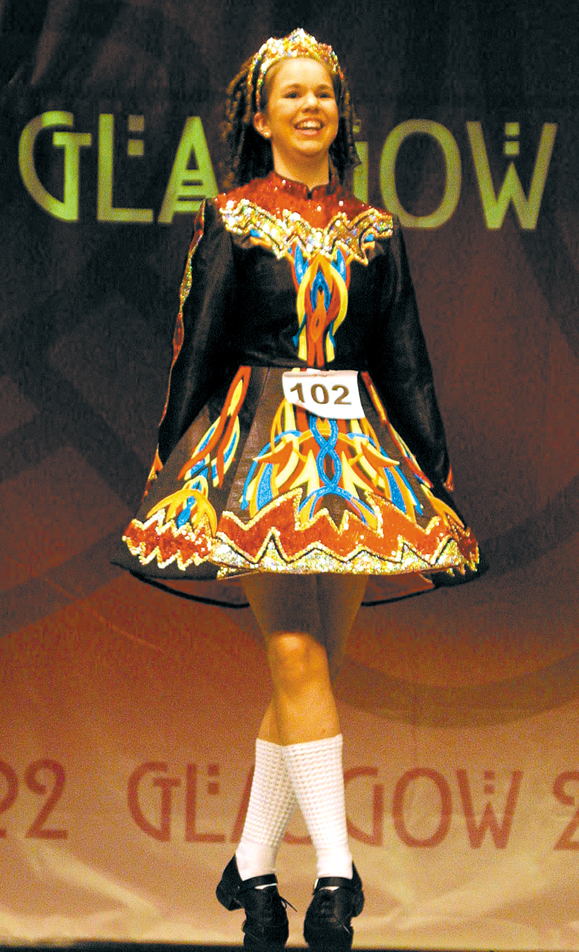
The highest placed females from the U.S. were at team level: Trinity Academy of Illinois reached second place in the girls’ figure Under-13 (out of 11 teams), and came third in the girls’ figure Over-16 (out of 13 teams) and the team from The Murphy Irish Arts Center of Ohio was fourth in the Dancedrama (out of 11 teams).
Though the American girls didn’t win any firsts in the solo dance categories, several placed high and it could be argued that their achievement is greater because they had to face a greater number of competitors.
Third place was attained by Kristin Butke of the O’Hare School, Akron, Ohio, in the 19-21 age group (out of 113 dancers — the winner was Angela Crowley of the Scanlon School, Birmingham, England). Butke is a seasoned performer having toured Europe with Michael Flatley in Lord of the Dance. Jillian Dury of the Trinity Academy, Chicago, placed third in the girls 11-12 (out of 151 dancers — the winner was Suzanne Coyle of the McLaughlin School in Glasgow). Fourth place in the girls 19-21 was reached by Nicole Rankin of the Richens-Timm Academy, Chicago.
The Armadillo was an ideal venue for the massive event and welcomed more than 20,000 people connected to the Championships.
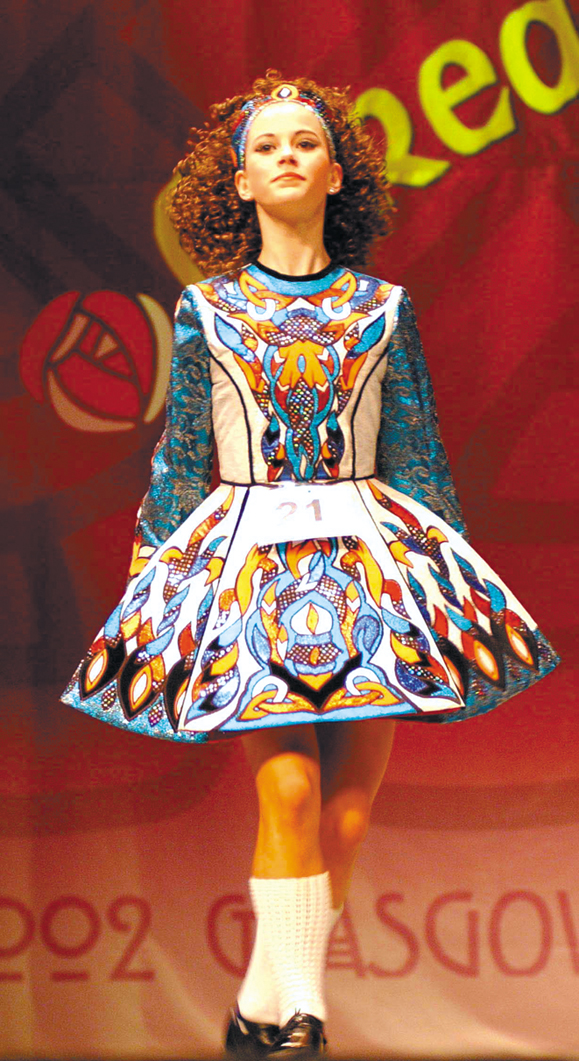
The warren of hallways and rooms inside was quite a challenge for the dancing guests to map out, but the younger ones saw it as an adventure and soon mastered the layout of the venue.
Dancers could be seen practicing steps — passion and determination etched on their faces — decked out in full costume, in the corridors connecting the auditorium to other parts of the SECC complex as well as in the practice rooms provided.
There was a carnival atmosphere around as tiny children, brothers and sisters of the dancers, wandered round carrying candy, popcorn and balloons.
And TV screens were conveniently placed around the venue to give live coverage of the dancing action in the auditorium, which seats more than 3,500 and was more than comfortable for the parties gathering each day for the different competitions.
The Armadillo is situated on the bank of the River Clyde, which was until fairly recently one of the world’s most bustling shipbuilding rivers where the cruise liner Queen Elizabeth II was built.
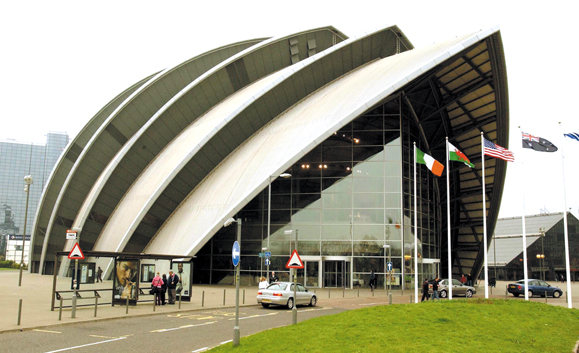
Close by the Armadillo is a relic 100-meter-high crane, a poignant reminder of the shipbuilding era.
Across the nearby Bell’s Bridge is the glistening new Glasgow Science Centre, a massive attraction visited by half a million annually and which saw an increase in these numbers for the duration of the Irish dancing event.
Many visitors to Scotland took time out to visit other parts of the country such as the capital city, Edinburgh.
Joseph Fleming from San Francisco traveled with his daughter Elizabeth, who was competing in the Girls 11-12 solo competition, to castles and landmarks around Scotland.
He said: “We loved our time in Glasgow and found the people to be most kind and helpful. We will definitely return to Scotland, we had such a wonderful time there.”
Glasgow indeed proved itself the perfect host of the global event with its magnificent facilities and the world-famous Scottish welcome.
At the opening event of the Championships Glasgow’s Lord Provost Alex Mosson spoke of the Irish heritage of Scotland and was followed by the Irish Consul General Conor O’Riordan who said that “since the Irish settled in Scotland the two countries have drawn closer together.”
Undoubtedly, the close cultural and historical links between Ireland and Scotland — reflected in similarities between the two countries in music, song, dance and Gaelic language — played an important part in Glasgow being chosen for this year’s extravaganza of Irish dance.
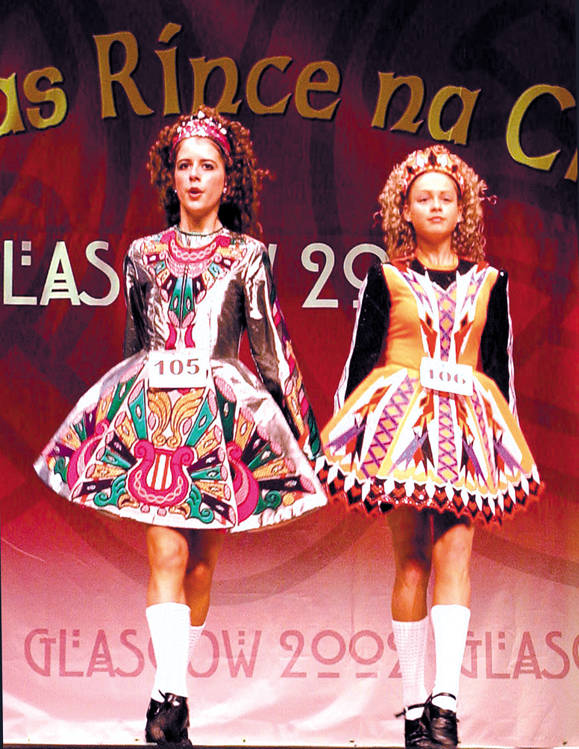
As if to exemplify this the World Championships was kicked off with a fine demonstration of Scottish culture. A piper took to the stage in full Highland regalia and gave a foot-stomping rendition of traditional Scottish airs. He was followed by Amanda McCann, a Scottish Highland dancer who was received with warmth and fascination by the crowd of Irish dance enthusiasts.
Scottish traditional dancing differs from Irish dancing in that the dancer in Scotland uses his or her arms in the dance whereas the Irish equivalent holds the arms rigidly by their sides.
Folk legend has it that Irish dancing evolved into its present state when dancers were forced to keep their arms still by the priests of the Catholic Church who regarded the use of the arms in dancing as `wanton.’ Irish dancing traditions in Scotland have been cultivated since the first influx of Irish immigrants who came to escape the Famine.
The culture the immigrants brought with them has thrived amongst their descendants in Scotland. Today there are 53 dance schools spread throughout Scotland, most of which can trace their origins back to the beginning of the last century.
A number of these schools featured prominently in this year’s World Championships.
Scot James McCutcheon, the chair of finance on the local event organizing team, is also a dancing teacher at the successful Setanta School in Scotland along with his wife Noreen.
James and Noreen teach their son Ronan (11) who this year became the first Scottish solo male to win at world level.
James said: “We were delighted that Ronan won. It was a great honor for him to achieve the title. He was injured at the beginning of the year and was under an added pressure in that this time the Championships were taking place in Scotland with his grannies, aunts and uncles watching. I really had to balance my attention this year between my administrative duties and training Ronan but I thought, all in all, the Championships was a great success.”
The location of next year’s World Championships will be decided at the forthcoming AGM (in May) of An Comisiun le Rinci Gaelacha, the World Irish Dance Commission, based in Dublin. ♦

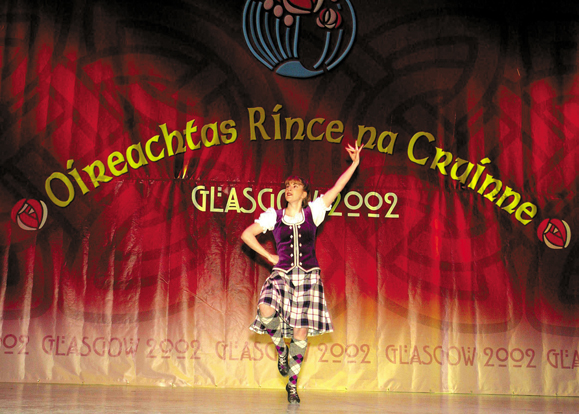
Leave a Reply